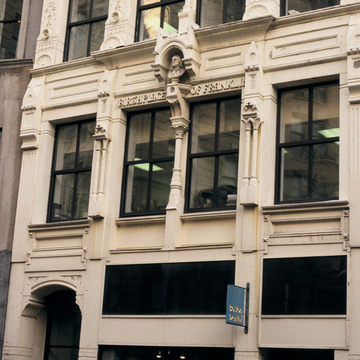You are here
Boston Post Building (Benjamin Franklin's Birthplace)
The front of the Boston Post Building is one of the few Boston cast-iron fronts for which the foundry is known. The facade is very ornate and fanciful, although only the second, third, and lower half of the fourth stories are original. The upper stories were altered in 1930. A bust of Benjamin Franklin is incorporated into the design between the second and third stories, to commemorate the site of his birthplace, his original house having been
Writing Credits
If SAH Archipedia has been useful to you, please consider supporting it.
SAH Archipedia tells the story of the United States through its buildings, landscapes, and cities. This freely available resource empowers the public with authoritative knowledge that deepens their understanding and appreciation of the built environment. But the Society of Architectural Historians, which created SAH Archipedia with University of Virginia Press, needs your support to maintain the high-caliber research, writing, photography, cartography, editing, design, and programming that make SAH Archipedia a trusted online resource available to all who value the history of place, heritage tourism, and learning.


